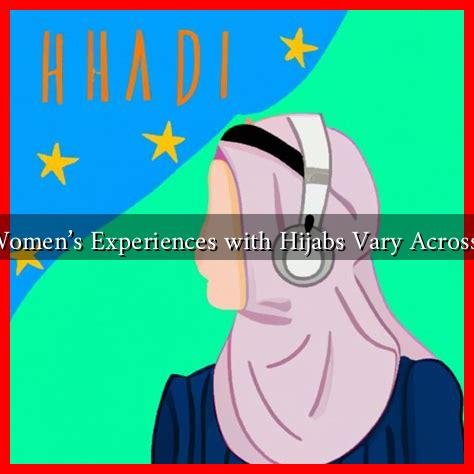-
Table of Contents
How Do Women’s Experiences with Hijabs Vary Across Cultures?
The hijab, a traditional headscarf worn by many Muslim women, is a symbol of faith, identity, and cultural heritage. However, the experiences of women who wear hijabs can differ significantly across various cultures and regions. This article explores these diverse experiences, shedding light on the factors that influence how hijabs are perceived and worn around the world.
The Cultural Significance of the Hijab
The hijab is not merely a piece of clothing; it carries deep cultural and religious significance. In many Islamic cultures, wearing a hijab is seen as an expression of modesty and piety. However, the interpretation and practice of hijab can vary widely:
- Religious Obligation: In some cultures, wearing a hijab is viewed as a religious duty, while in others, it is a personal choice.
- Symbol of Identity: For many women, the hijab serves as a marker of cultural identity, connecting them to their heritage.
- Political Statement: In certain contexts, wearing a hijab can be a form of resistance against Westernization or political oppression.
Regional Variations in Hijab Practices
Women’s experiences with hijabs can differ dramatically based on geographical location. Here are some notable examples:
Middle East and North Africa
In countries like Saudi Arabia and Iran, wearing a hijab is mandated by law. Women in these regions often face strict regulations regarding their attire:
- In Saudi Arabia, women are required to wear an abaya (a loose-fitting cloak) over their clothing, along with a hijab.
- In Iran, the hijab is compulsory, and women can face legal repercussions for not adhering to the dress code.
Conversely, in countries like Tunisia, women have more freedom regarding their choice to wear a hijab, reflecting a more secular approach to governance.
South Asia
In South Asian countries such as Pakistan and Bangladesh, the hijab is often worn as a cultural practice rather than a strict religious obligation. Women may choose to wear a hijab in various styles:
- The dupatta, a long scarf, is commonly used to cover the head and shoulders.
- Some women opt for the full hijab, while others may wear it loosely or not at all.
In urban areas, the hijab is often seen as a fashion statement, with many women incorporating modern styles and colors.
Western Contexts
In Western countries, the hijab can be a source of both empowerment and discrimination. Women who wear hijabs in places like France or the United States often navigate complex social landscapes:
- In France, the 2004 law banning religious symbols in public schools has led to significant debate about secularism and religious freedom.
- In the United States, while many women feel empowered by their choice to wear a hijab, they may also face Islamophobia and prejudice.
Despite these challenges, many women in Western countries use social media platforms to share their experiences and promote understanding of hijab-wearing cultures.
Case Studies: Personal Narratives
To better understand the varied experiences of hijab-wearing women, consider the following case studies:
- Amina from Saudi Arabia: Amina describes her hijab as a source of pride and identity, but she also feels the pressure of societal expectations to conform to strict dress codes.
- Fatima from France: Fatima shares her struggles with discrimination but also highlights the support she receives from her community, which empowers her to embrace her identity.
Conclusion: Embracing Diversity in Hijab Experiences
The experiences of women who wear hijabs are as diverse as the cultures they inhabit. From being a symbol of faith and identity to a source of empowerment or discrimination, the hijab carries different meanings across the globe. Understanding these variations is crucial in fostering respect and appreciation for cultural differences. As societies continue to evolve, the dialogue surrounding the hijab will remain an essential aspect of discussions on gender, identity, and religious freedom.
For further reading on the cultural significance of the hijab, you can explore resources from Al Jazeera.

